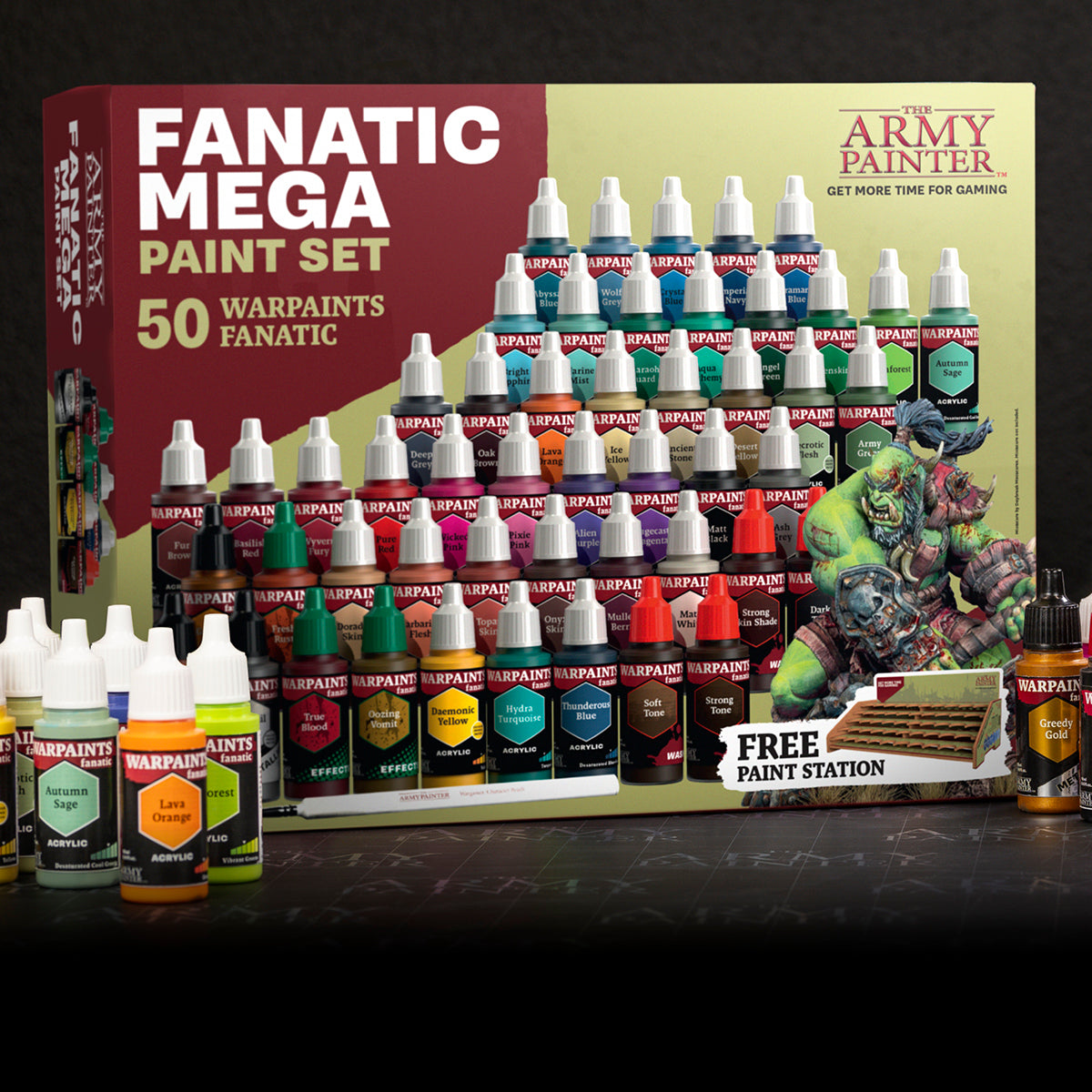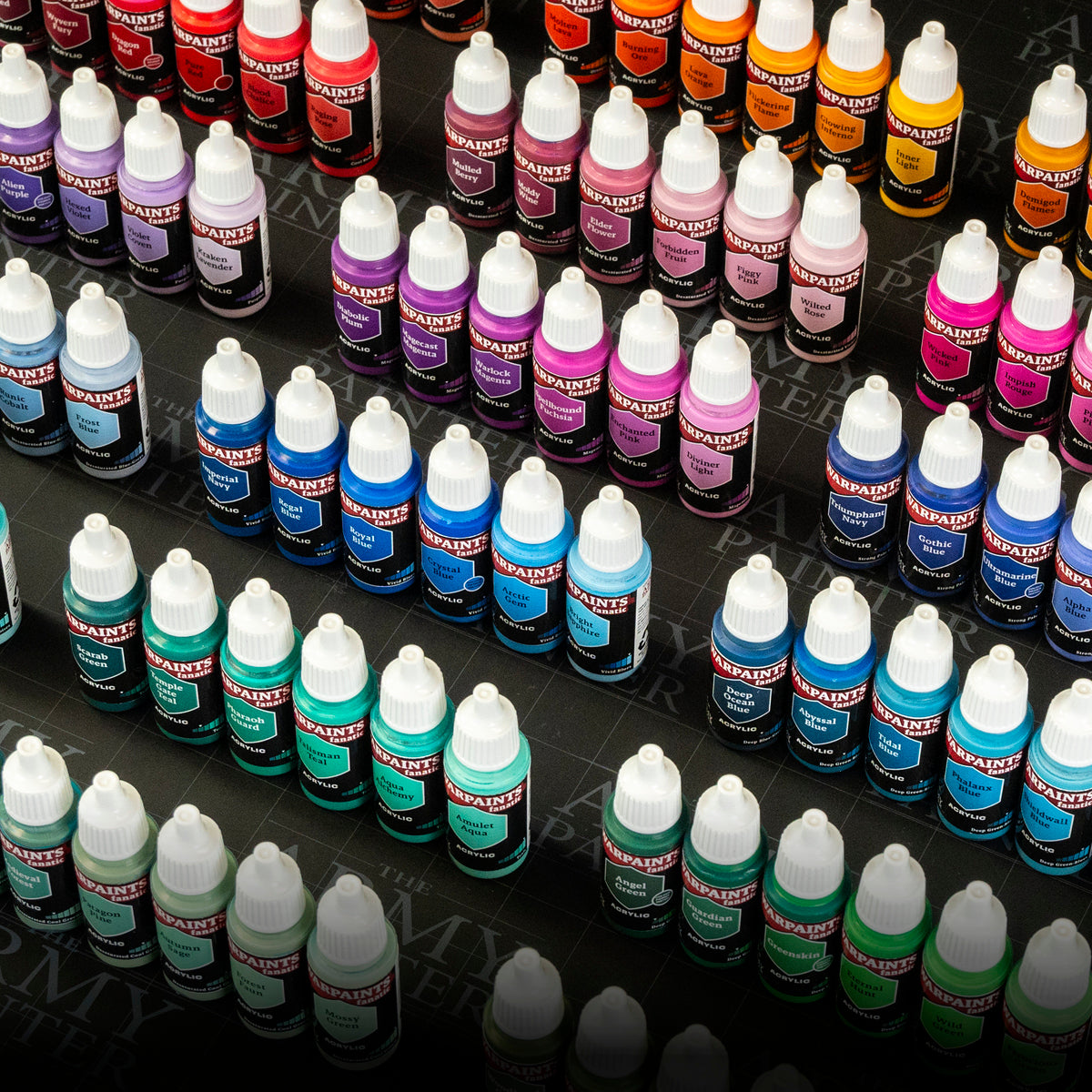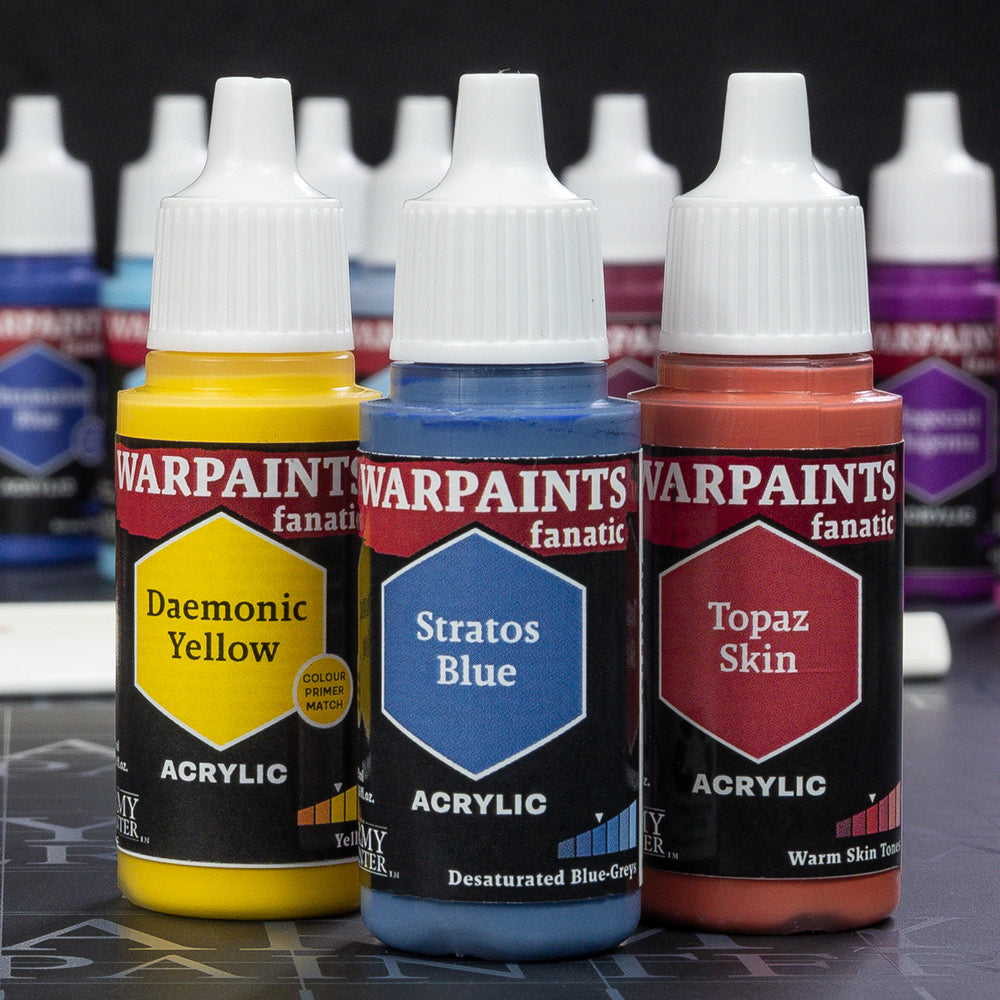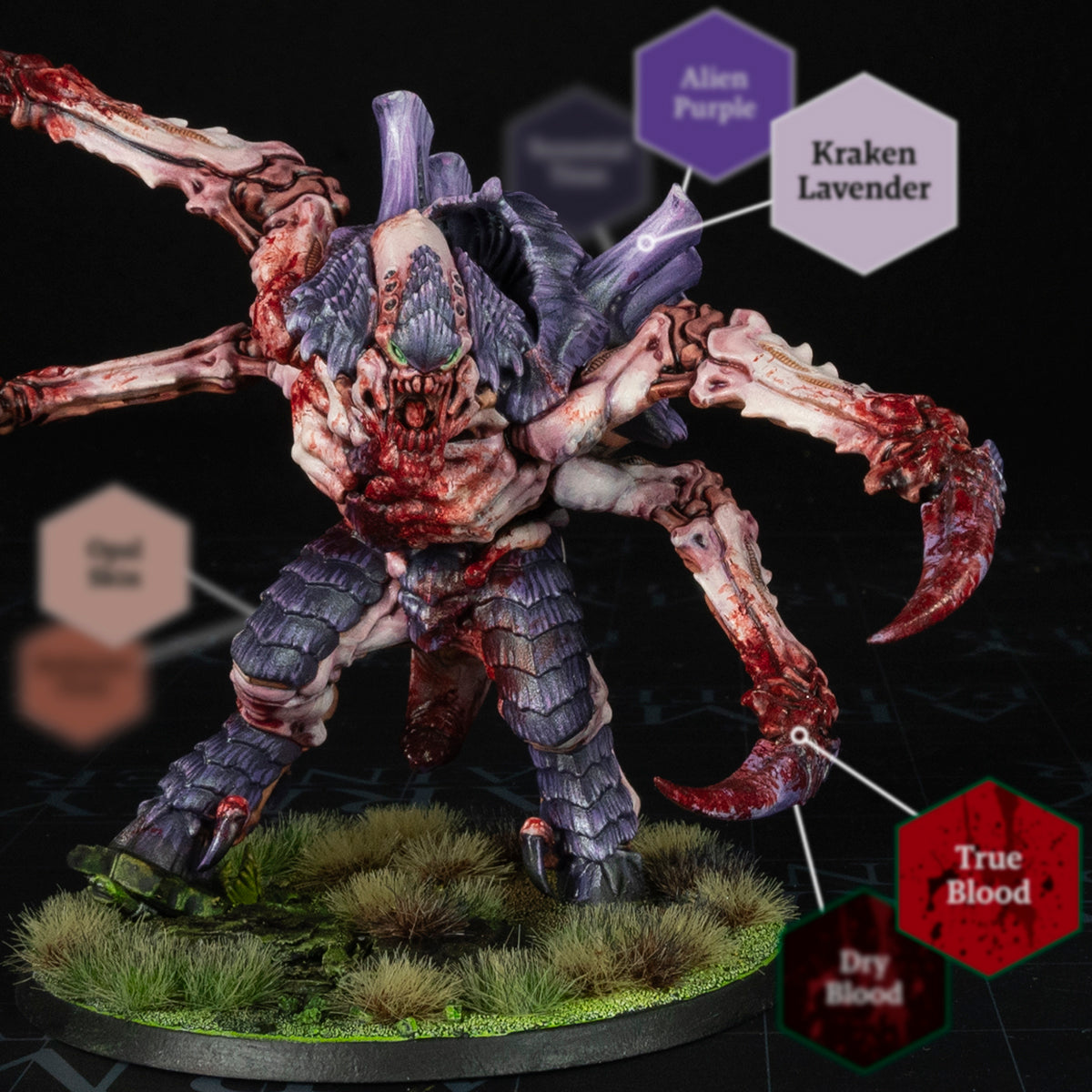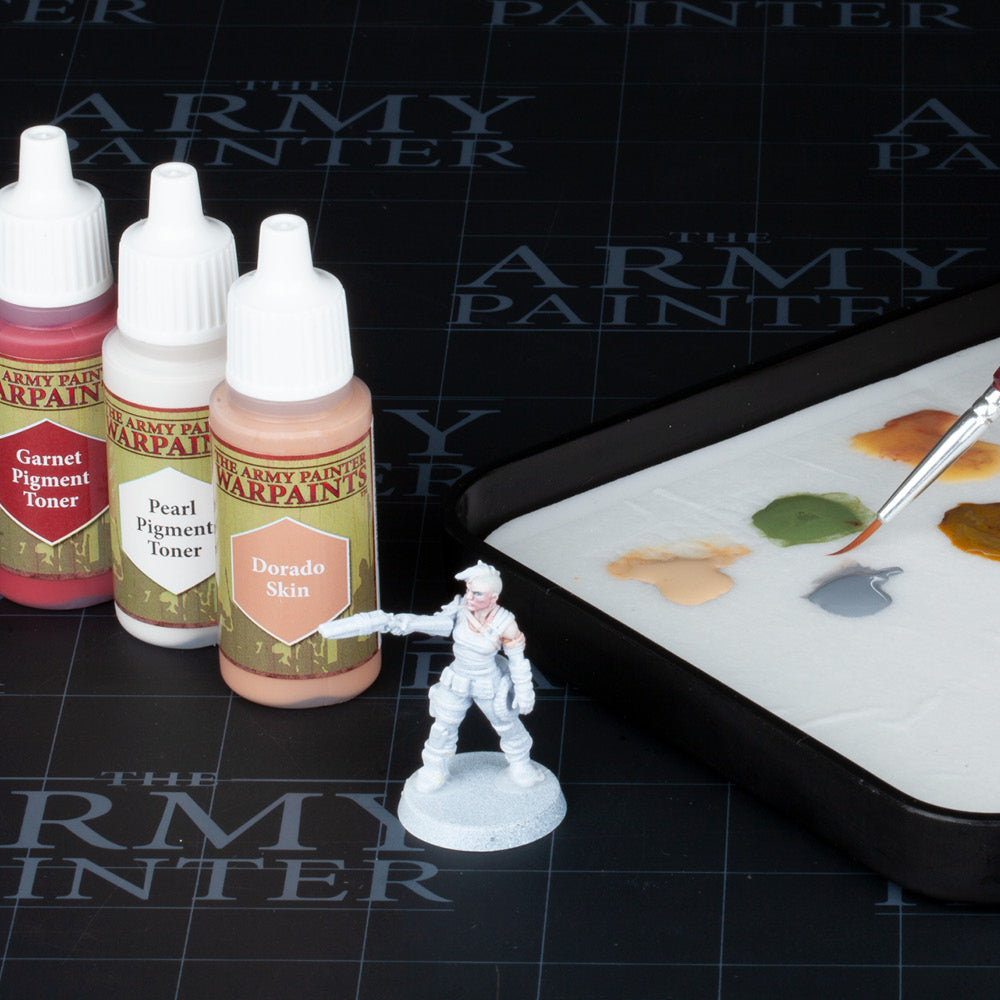Learn the “Secrets” of Paint for Miniatures
Making good paint is hard to do. Making a paint that performs for the best painters in the world, meets the demands of army painters and gamers, while still being easy enough to use for someone just getting started in the hobby – well – that took some very creative thinking.
We didn’t reinvent miniature paint – we reimagined what a miniature paint should be!
In this article, we’ll take a look at what makes a good paint for miniatures and how Warpaints Fanatic differs from other miniature paints.
What Is Paint for Miniature Figures?
What Does Miniature Paint Consist Of?

Soft bodied acrylic paints, like we use in miniature painting, are made using three common materials: pigment, binders, and solvents.
- Pigments: Pigments are finely ground particles that give paint its colour and opaqueness. Paints will be made using one pigment or a blend of pigments to achieve the desired colour. The choice of pigments will also affect the paint’s colour strength, opacity, and lightfastness (resistance to fading).
- Binder: The binder holds the pigment particles together and is what gives the paint its binding effect. These are usually acrylic resin based and give pigments their adhesive properties when applying them.
- Solvent: When you combine the heavy pigments and binder and a liquid vehicle, you have a paint. When the paint is applied, the solvent evaporates, leaving the pigment and binder on the miniature's surface.
So, pigments + binder + solvent = paint.
What Makes a Paint for Miniatures Good?

Paints have three basic characteristics in which they are measured by: coverage (the ability to cover a surface), pigmentation (the vibrancy of the paint), and consistency (how the paint feels in-use and its colour consistency between production batches).
High-quality paints like Warpaints Fanatic have a higher solid and pigment content to liquid ratio.
While many paint brands claim to be heavy pigmentation and high coverage, the truth is that heavily pigmented paints can be extremely difficult to work with, leaving streaks, and unsightly textures on your miniature if you’re not careful. High-coverage paints tend to get chalky and reduce vibrancy in the colour of the paint.
With Warpaints Fanatic, we went outside the confines of the common three ingredients with the creation of The Army Painter proprietary Stabilizing Technology. Thanks to the Fanatic Stabilizer we have created a paint range that features 300-700% more pigmentation! Those pigments are then suspended in a very high-covering resin base that applies smooth, with unsurpassed coverage, while retaining rich, vibrant, and saturated colour on your miniatures
Our 216 Core Warpaints Fanatic

Preparing Your Warpaints Fanatic
All acrylic paints require appropriate mixing, especially heavily pigmented paints like our Warpaints Fanatic. The heavier the pigmentation, the more likely they are to settle and separate from the solvent.
To blend the ingredients, you must agitate them. You can do this by simply giving the bottle a good shake before each use.


